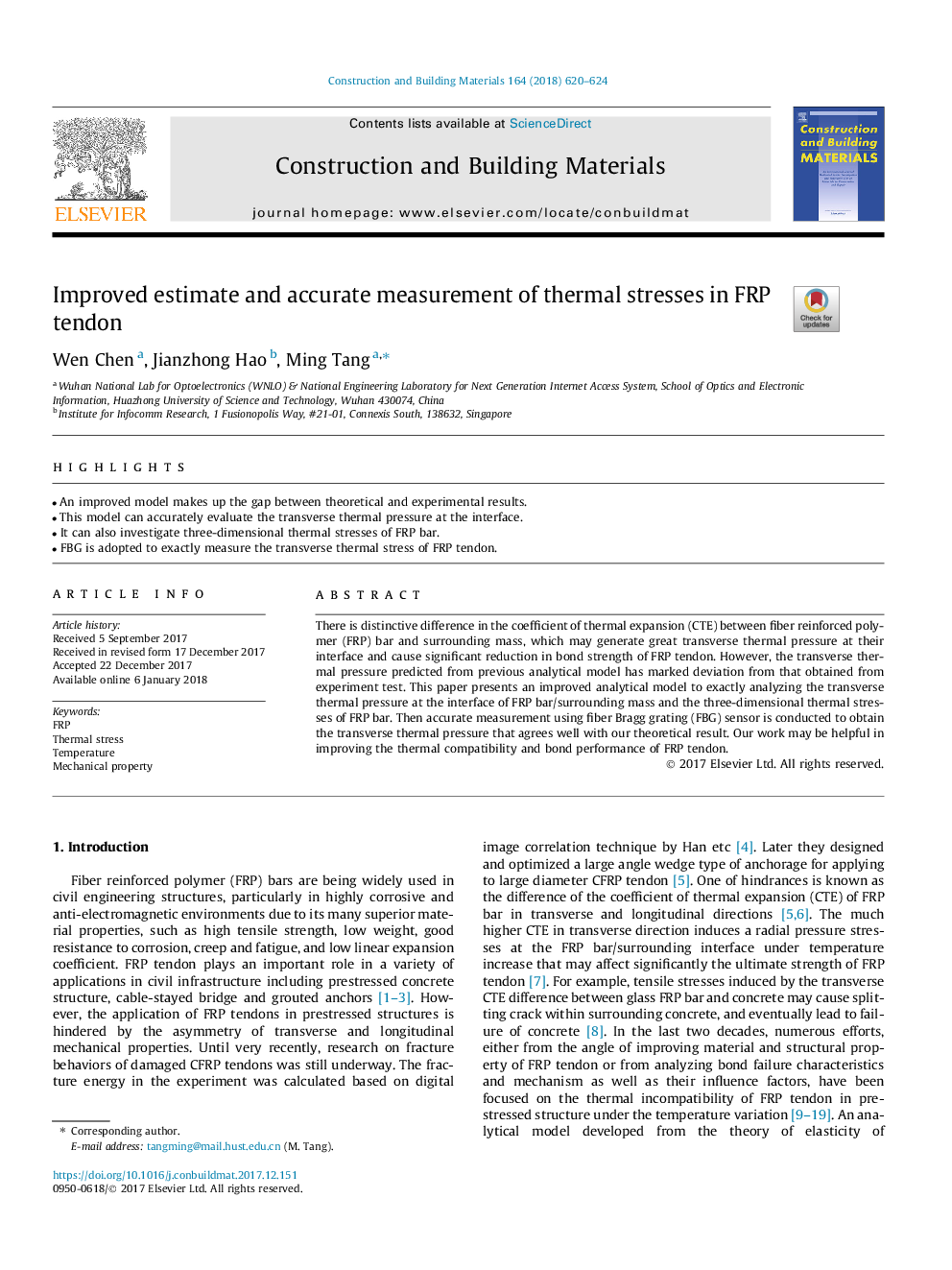| Article ID | Journal | Published Year | Pages | File Type |
|---|---|---|---|---|
| 6716075 | Construction and Building Materials | 2018 | 5 Pages |
Abstract
There is distinctive difference in the coefficient of thermal expansion (CTE) between fiber reinforced polymer (FRP) bar and surrounding mass, which may generate great transverse thermal pressure at their interface and cause significant reduction in bond strength of FRP tendon. However, the transverse thermal pressure predicted from previous analytical model has marked deviation from that obtained from experiment test. This paper presents an improved analytical model to exactly analyzing the transverse thermal pressure at the interface of FRP bar/surrounding mass and the three-dimensional thermal stresses of FRP bar. Then accurate measurement using fiber Bragg grating (FBG) sensor is conducted to obtain the transverse thermal pressure that agrees well with our theoretical result. Our work may be helpful in improving the thermal compatibility and bond performance of FRP tendon.
Related Topics
Physical Sciences and Engineering
Engineering
Civil and Structural Engineering
Authors
Wen Chen, Jianzhong Hao, Ming Tang,
